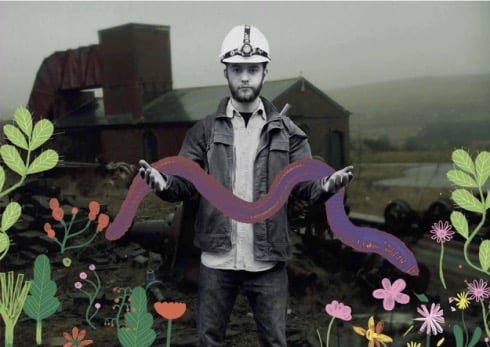Can Earthworms Give Coal Miners Green Jobs?

VISION: Earthworms could revitalize old coal mines by both cleaning up contaminated soil and turning heavy metals into valuable “nanocrystals” in their guts—providing new jobs to depressed communities and supporting the growth of solar power.
TEAM: Liv Bargman, Nina Cutler
SCHOOL: Central Saint Martins, 2017
Quantworm Mine proposes to build a nanotech “wormery” that revitalizes abandoned coal mines into productive “green” enterprises, employing former coal miners and providing materials to build solar panels.
Earthworms are capable of removing heavy metals from soils. More remarkably, if fed the right mixture of chemicals, they can process the metals in their guts to create nanocrystals—small pieces of semiconducting metal—that are called quantum dots. Quantum dots are used in medical imaging, LED screens, and solar panels.
Sites of former coal mines in the United Kingdom, particularly in South Wales, are often laden with toxic heavy-metals, including cadmium, lead, copper, zinc, and arsenic. As coal mines close, the communities around them not only suffer contaminated landscapes but also employment crises.
To address both issues, in a playful speculation, the team imagined miners being trained and retooled with devices to retrieve the quantum dots from local worms’ guts. These included things like “worm zappers” to lure them, and “worm ticklers” to get them to regurgitate the nanocrystals.
“There’s this process called mutual antagonism, which is how quantum dots are made. We all do it as animals—if you look into big whales where there’s been lots of contaminate in the water, or even humans, we would find quantum dots in our livers. It’s just that we can’t ingest as much heavy metals as a worm can,” say Quantworm Mine creators Bargman and Cutler.

